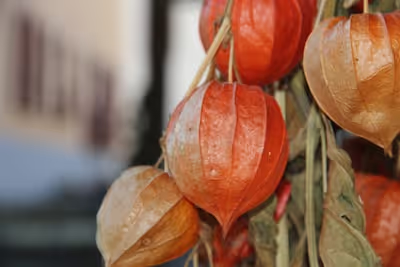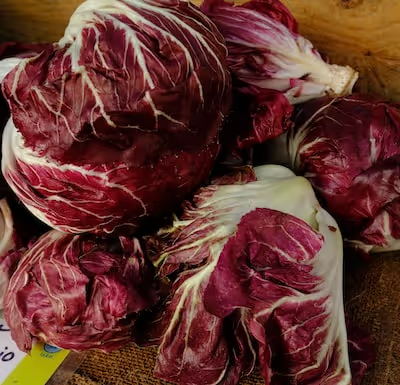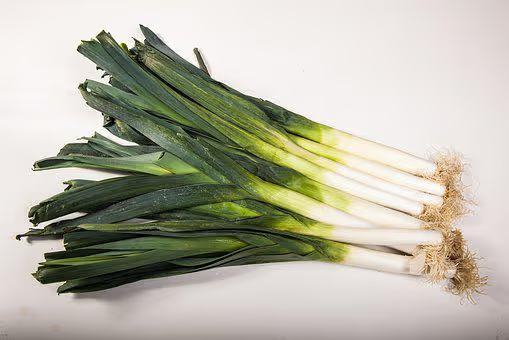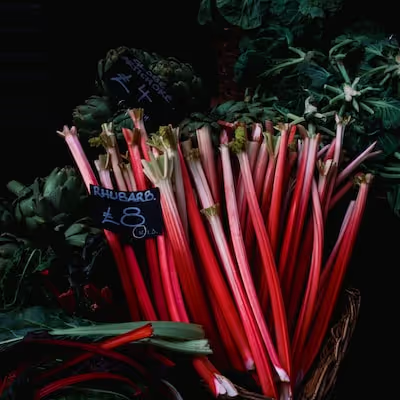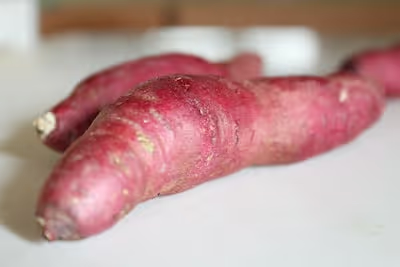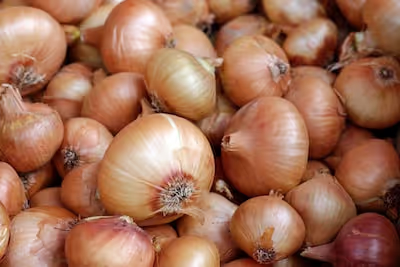Growing Oyster Leaf: A Gardener's Guide to Coastal Flavor
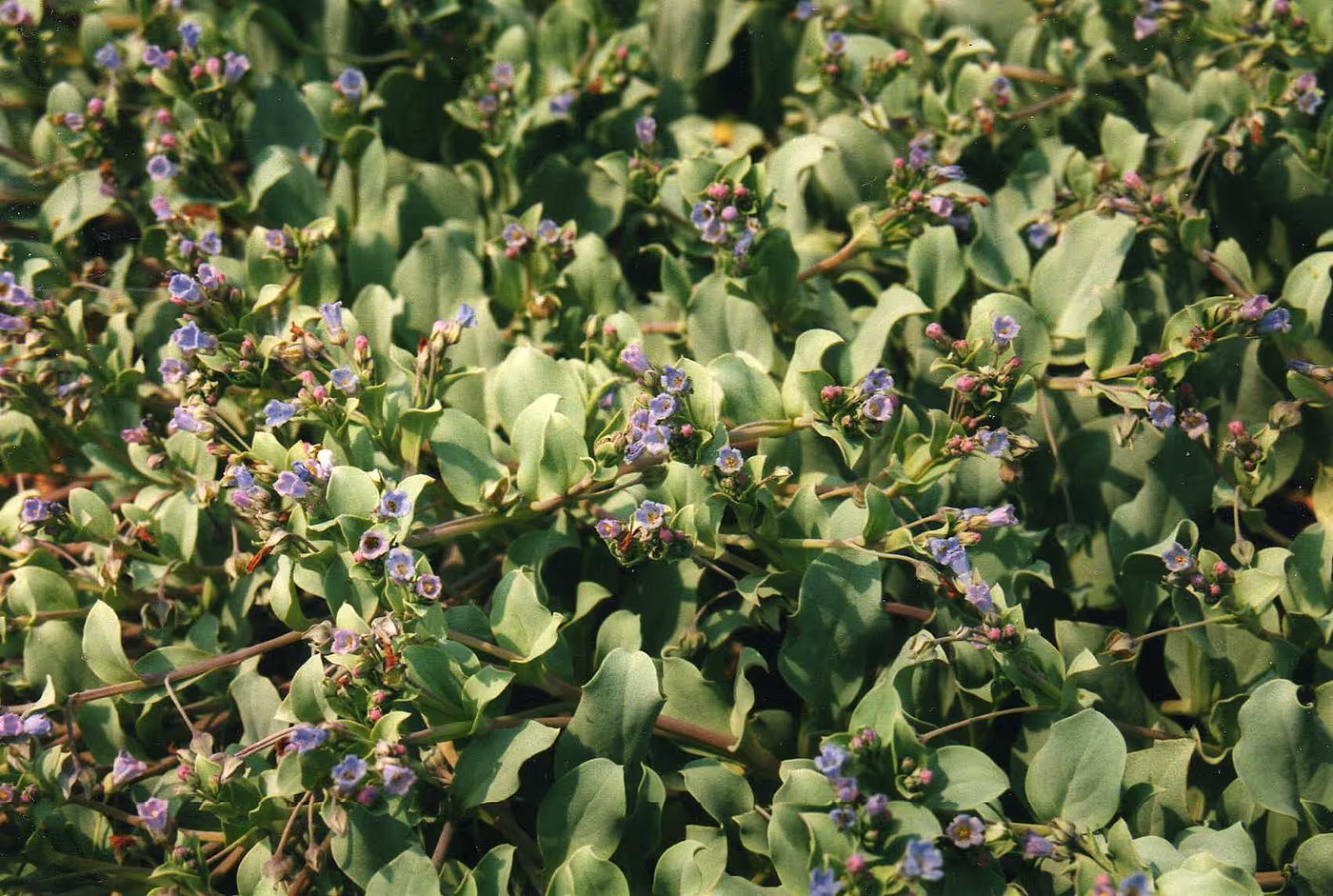
Growing Oyster Leaf
Growing oyster leaf means planting in gritty, well-draining soil, keeping the air cool and maritime, and watering sparingly. This salty little sea vegetable thrives in partial sun and needs protection from intense heat. Get it right, and you'll harvest tender, ocean-flavored greens chefs rave about—curious yet?
Cheatsheet: Cultivating Oyster Leaf for Salty Notes
🌱 Site & Soil
- Partial shade; protect from harsh sun
- Moist, well-drained, sandy or chalky soil
- pH 6.5–7.5 preferred
- Native to coastal zones; tolerates saline spray
🛠️ Tools and Products You'll Need
- Fresh oyster leaf (Mertensia maritima) seeds or young plants
- Seed tray, shallow pots, or trays
- Fine seed compost
- Sand/gravel for drainage
- Misting spray bottle
- Row cover or cold frame (for winter)
- Hand trowel
- Pebbles for mulch
- Scissors for harvest
🌊 Sowing & Planting
- Sow seeds in late winter/early spring (50–60°F, 10–16°C)
- Press into soil; do not cover
- Keep moist, not soggy
- Germination: 3–5 weeks; sometimes longer (be patient)
- Transplant after frost risk, 12 in / 30 cm apart
💧 Water & Care
- Water weekly; let top inch/cm dry slightly
- Add grit/sand for drainage
- Mulch with pebbles to mimic coastal habitat
- Protect from slugs/snails
- Winter: shelter with cold frame or fleece
✂️ Harvest & Use
- Begin harvesting at 6 in / 15 cm tall
- Pick outer leaves; avoid stripping plant
- Flavor: briny, oyster-like; pairs with seafood, salads
- Rich in vitamin C and minerals
🧬 Nutrition & Self-Sufficiency
- Contains omega-3 fatty acids, calcium, iron
- Perennial: returns year after year
- Reduces seafood harvest pressure—eco-friendly
👩🌾 Step-by-Step Actions
- Prepare soil with sand/grit and compost.
- Sow seeds on surface; keep moist until sprouted.
- Transplant outdoors post-frost, spacing well.
- Mulch, water as needed, protect from pests.
- Harvest sparingly; enjoy fresh or chilled.
-
Growing Oyster Leaf: a gardener’s guide to coastal flavor
I grow Mertensia maritima for its cold blue leaves and that clean briny bite chefs rave about. The first time I tasted it, I thought of low tide, shucked on ice, and a squeeze of lemon.
What it is and why it thrills cooks
Mertensia maritima sits in the borage family, cousin to borage and comfrey, with succulent, glaucous foliage and nodding blue bells. Leaves carry an oyster flavor with a whisper of cucumber, so they land on tasting menus and in home gardens alike.
Climate fit
This is a cool-coast specialist that prefers long springs, mild summers, and cold, bright winters. In my beds it thrives between 45 to 70 F, 7 to 21 C, and flags once days top 85 F, 29 C for a week.
Hardiness and exposure
I’ve overwintered it in USDA zones 4 to 7 without drama when drainage is sharp. Give full sun in cool-summer areas, or morning sun and afternoon shade inland to dodge heat stress.
Soil recipe that works
Think beach edge, not bog. I mix 50 percent horticultural grit, 30 percent sandy loam, and 20 percent compost, then top-dress with crushed oyster shell to steady pH and evoke its native strandline.
Water and feeding
Keep it evenly moist in spring, then water deeply but infrequently once roots run, letting the top inch dry between drinks. Feed lightly with a kelp or fish hydrolysate every 4 to 6 weeks during active growth, and skip high-nitrogen products that bloat soft growth.
Raised beds and containers
Heat is the enemy, so I use broad, shallow terracotta pans that wick and keep crowns cool. A 10 to 12 inch, 25 to 30 cm wide bowl with the gritty mix above has been my most reliable setup on patios.
Wind and salt
Salt spray doesn’t faze it, but hot inland winds scorch tips. I park mine behind a slatted screen that slows gusts while keeping air moving.
Propagation: seed
Fresh seed wakes best. I sow late fall outdoors so winter provides natural cold stratification, or I chill moist seed in the fridge for 6 to 10 weeks at 34 to 41 F, 1 to 5 C, then move to 55 to 60 F, 13 to 16 C light for germination.
Germination runs sporadic, so I sow thickly in cell trays and prick out the winners once they show two true leaves. Err on the dry side to avoid damping off.
Propagation: cuttings and division
Basal cuttings in early spring root fast for me. I slice a firm, nonflowering shoot at the crown, dust with rooting hormone, and set into a 60 percent grit mix under bright shade.
Older clumps also split cleanly if you keep a piece of crown attached to each section. Replant high with a gravel collar so the crown never sits wet.
Transplant timing
Plant out once nights sit above 40 F, 4 C and the root ball holds together. If heat looms, hold plants in bright shade and plant after a cool front.
Mulch and temperature control
Skip bark. A 1 inch, 2.5 cm gravel mulch reflects light, sheds water, and keeps foliage spotless.
On brutal inland weeks, I throw a 30 percent shade cloth from noon to 4 pm, which keeps leaf temperature under control.
Harvest routine
I graze, I don’t scalp. Take the outermost leaves or tip a stem by one node, then wait 10 to 14 days before picking that area again.
A happy plant gives me 20 to 40 market-quality leaves per month in spring and early summer, and half that in high summer. Refrigerate unwashed leaves in a vented clamshell to hold texture for 3 to 5 days.
Kitchen notes from the beds
Serve leaves raw to keep the ocean flavor loud. I pair them with new potatoes, trout, cucumber, and a lemony crème fraîche, or fold them into a mignonette like a secret handshake.
Pests and problems
Slugs, snails, and flea beetles crave the succulent tissue. I ring pots with copper tape, bait slugs away with boards and traps, and use a lightweight row cover during seedling stage.
Crown rot only shows up when media compacts. Refresh grit every spring and never bury the crown.
Season-by-season playbook
- Late fall: sow seed outdoors or start cold stratification in the fridge.
- Late winter: root basal cuttings under bright shade.
- Early spring: plant out into cool beds, top with gravel, set slug defenses.
- Spring to early summer: steady harvests and light feeds.
- High summer: add midday shade, water deeply, reduce harvest pressure.
- Autumn: trim only dead stems, keep crowns high and dry for winter.
Commercial notes and buying guide
Nurseries sell starter plants in spring because summer shipping cooks them. I buy compact, firm plugs with blue-grey leaves and no flower buds, since budding stalls establishment.
Expect seeds at 3 to 6 USD or EUR per packet and plants at 8 to 18 USD or EUR each from alpine-focused growers. Ask for propagation history and whether stock was raised cool, which saves you weeks of hardening.
Site selection I trust
Rock gardens, alpine troughs, and raised beds by reflective stone keep the microclimate stable. Avoid south-facing walls inland, which radiate heat into the night.
Companions that match its vibe
- Sea kale, Crambe maritima: edible, blue-leaved, same grit mix.
- Thrift, Armeria maritima: pink cushions that love salt and wind.
- Horned sea poppy, Glaucium flavum: sculptural and drought-tolerant.
- Low thymes, Thymus spp.: living mulch that perfumes the heat.
Smart substitutions if supply runs tight
- Sea kale leaves for a mild marine edge when blanched then chilled.
- Sea fennel, Crithmum maritimum, for citrus-saline crunch in salads.
- Glasswort, Salicornia, for briny snap next to grilled fish.
- Borage, Borago officinalis, for cucumber notes that support shellfish.
Chef-forward plating ideas straight from the beds
- Lay three oyster leaves in a fan under a crudo, then add a dot of yuzu mayo.
- Serve on buttered rye with pickled shallot and smoked trout.
- Top deviled eggs with a single leaf and cracked black pepper.
Safety and ethics
I avoid wild harvesting; coastal populations can be fragile. Grow your own and leave shorelines to recover.
By the numbers: height 4 to 8 inches, 10 to 20 cm; spread 12 to 18 inches, 30 to 45 cm; cold stratification 6 to 10 weeks at 34 to 41 F, 1 to 5 C; ideal media 50 percent grit, 30 percent sandy loam, 20 percent compost.
Field notes that saved me plants
Heatwave trick: freeze a water bottle, set it on the gravel beside the crown at noon, and tent with shade cloth for 3 hours. It’s crude, but I’ve watched a sulking plant perk up in 48 hours.
Flavor tip: leaves taste brightest in the morning before sun drives off volatiles. I harvest pre-coffee, then plate at lunch.
Frequently asked questions on Growing Oyster Leaf
Can I grow it indoors under lights? Yes, if you keep air cool at 55 to 65 F, 13 to 18 C, use a full-spectrum LED at 200 to 300 µmol m-2 s-1, and a gritty mix with a fan for airflow.
How long from seed to harvest? With fall sowing and a proper chill, I pick the first leaves in 14 to 18 weeks, and full production starts around week 22.
Does it regrow after flowering? It slows. I pinch off the first flower spikes to keep leaves coming, then let a late spike set seed for stock.
Troubleshooting quick list
- Leaves pale and floppy: media too rich or overwatered. Add grit and back off the can.
- Brown leaf edges: heat or salt buildup in containers. Flush pot and add shade at midday.
- Sudden collapse at crown: rot. Lift, trim to clean tissue, dust with sulfur, replant high in fresh mix.
Why it belongs in more gardens
Few crops deliver terroir this vivid. Grow it for the flavor, stay for the blue foliage that anchors a cool-toned bed all season.
Sources and further reading
Royal Horticultural Society plant profile for Mertensia maritima covers cultivation notes and garden use. Kew Science, Plants of the World Online, documents taxonomy and native range for Mertensia maritima.
Plants For A Future lists edibility and basic culture, useful as a cross-check. Nordic Food Lab and New Nordic cookbooks highlight culinary use and handling to protect flavor.
Missouri Botanical Garden and regional alpine plant societies provide additional hardiness and rock garden techniques. Regional extension bulletins on seed stratification explain cold-moist protocols that boost germination.
Frequently Asked Questions About Growing Oyster Leaf
What soil type best supports oyster leaf growth?
Oyster leaf thrives in sandy, well-draining soils enriched with organic matter. A soil blend that remains moderately moist yet provides efficient drainage encourages optimal plant health and vigor.
Where is the ideal planting location?
Locate your oyster leaf plants in full sun to partial shade locations. Coastal climates provide ideal conditions, particularly where temperatures typically range between 50°F to 70°F (10°C to 21°C). Protect the plants from harsh winds, as strong gusts can damage their delicate foliage.
How often does oyster leaf need watering?
Water oyster leaf plants regularly so the soil stays consistently moist without becoming waterlogged. Typically, watering once or twice a week suffices, but frequency might differ depending on local weather conditions. Avoid allowing soil to dry out completely between waterings.
Is oyster leaf frost-tolerant?
Oyster leaf can withstand mild frost down to around 28°F (-2°C), but intense or prolonged freezing temperatures can damage its foliage. In colder climates, provide protective measures such as mulch or coverings to guard against extreme cold snaps.
Can oyster leaf grow in pots or containers?
Yes, oyster leaf grows successfully in containers or pots placed outdoors or in greenhouses. Ensure pots offer adequate drainage holes, and select a sandy, nutrient-rich potting mix. Container growing makes it easier to manage watering and soil quality for superior results.
When and how do you harvest oyster leaf?
Harvest oyster leaf gently by picking individual leaves once the plant has developed enough foliage to support continued growth. Typically, harvesting begins around 60–70 days after planting. Limit each picking session to a third of the foliage to preserve plant health and ensure constant leaf production.
How do you propagate new oyster leaf plants?
Propagation occurs most effectively through seed sowing or careful division of established plants. Sow seeds during spring in trays filled with moist, sandy soil. Gently cover the seeds with a minimal amount of soil and maintain consistent moisture until seedlings emerge in about two weeks.
Growing Oyster Leaf pulls flavor straight from the sea and drops it into your backyard. This quirky, blue-green perennial rewards patience—slow to sprout, but damn near immortal once settled. Give it salt-kissed air, lean soil, and cool roots. Don’t overwater. Harvest young leaves when their briny punch is sharpest. Toss a few on raw oysters, or let them steal the show in a salad. In a world full of bland greens, here’s a plant that tastes like a tidepool and thrives on neglect. Curious about adding more unique flavors? Check out growing borage for another unexpected twist. With a little grit and a pinch of patience, growing oyster leaf brings the wild coast home, one salty bite at a time.
The Homesteader's Take on Oyster Leaf Cultivation
Nutritional Value and Self-Sufficiency
- Nutrient Dense Greens: Vitamin A, C, and essential minerals like calcium, iron, magnesium enhance homestead diets.
- Salinity Tolerance: Thrives in saline coastal soil, utilizing unproductive homestead areas.
- Perennial Advantage: Reliable, long-term harvest reducing annual planting efforts.
Integration with Homestead Livestock and Composting
- Poultry Feed Supplement: Nutrient-rich leaves can supplement chicken and duck diets, providing vital trace minerals.
- Waste Recycling: Easily compostable stems and leaves replenish nutrient cycles in garden beds or mulch.
Preservation Methods for Year-Round Availability
- Dehydration: Low-temperature drying (below 105°F / 40°C) maintains mineral and flavor profiles.
- Freeze Preservation: Blanch briefly, ice bath immediately, freeze at 0°F / -18°C to ensure optimal flavor and nutrient retention.
- Infused Coastal Vinegar: Steep fresh oyster leaves in apple cider vinegar for 4–6 weeks, creating nutrient-rich, flavorful homestead pantry staple.
Sustainable Seed Saving Practices
- Selective Harvesting: Allow healthiest, disease-free plants to flower, producing mature seeds for next season.
- Proper Storage: Air dry seeds thoroughly, store in cool, dark, moisture-free environment (optimal: 40°F / 4°C; humidity <10%) to maintain viability.
Find out which plants will thrive in your garden!
Answer a few fun questions and get custom plant recommendations perfect for your space. Let’s grow something amazing together!

start your season
